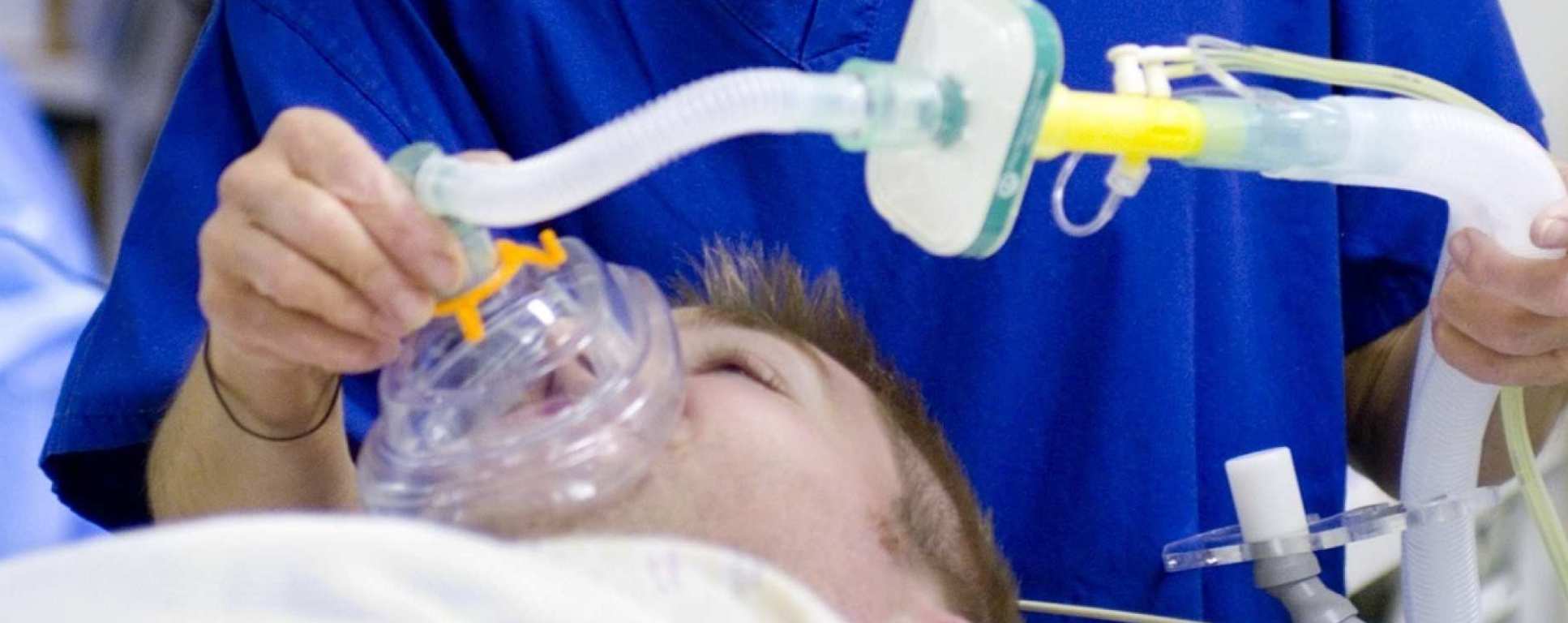Anaesthesia and Perioperative Care
 Anaesthesia makes up the largest hospital speciality and has a huge role to play in nearly every aspect of any hospital from operating theatres to accident and emergency, to the labour ward, and to intensive care. Our research ranges from basic molecular research into mechanisms of anaesthesia to investigating the clinical impact of novel anaesthetic agents.
Anaesthesia makes up the largest hospital speciality and has a huge role to play in nearly every aspect of any hospital from operating theatres to accident and emergency, to the labour ward, and to intensive care. Our research ranges from basic molecular research into mechanisms of anaesthesia to investigating the clinical impact of novel anaesthetic agents.
Our research covers the entirety of patient’s perioperative journey and through this, we aim to deliver the greatest impact. The section has been pioneering in the development of novel technologies to facilitate the delivery of anaesthetic agents and has also made pivotal in-roads into the mechanism of action of anaesthetic agents and their wider application to other diseases (such as their protective roles in brain injury and in cancer).
Research themes:
- Anaesthesia mechanisms and effects
- Brain and neuroprotection
- Cardiothoracic anaesthesia and transplantation
Results
- Showing results for:
- Reset all filters
Search results
-
Journal articleLu Y, Li Z, Zhang X, et al., 2010,
Retinal nerve fiber layer structure abnormalities in early Alzheimer's disease: Evidence in optical coherence tomography
, NEUROSCIENCE LETTERS, Vol: 480, Pages: 69-72, ISSN: 0304-3940- Author Web Link
- Cite
- Citations: 197
-
Journal articleSanders RD, Manning HJ, Robertson NJ, et al., 2010,
Preconditioning and Postinsult Therapies for Perinatal Hypoxic-Ischemic Injury at Term
, ANESTHESIOLOGY, Vol: 113, Pages: 233-249, ISSN: 0003-3022- Author Web Link
- Cite
- Citations: 44
-
Journal articleTerrando N, Fidalgo AR, Vizcaychipi MP, et al., 2010,
The impact of IL-1 modulation on the development of lipopolysaccharide-induced cognitive dysfunction
, Critical Care (UK), Vol: 14, Pages: 1-9, ISSN: 1364-8535IntroductionThe impact of pro-inflammatory cytokines on neuroinflammation and cognitive function after lipopolysaccharide (LPS) challenge remains elusive. Herein we provide evidence that there is a temporal correlation between high-mobility group box 1 (HMGB-1), microglial activation, and cognitive dysfunction. Disabling the interleukin (IL)-1 signaling pathway is sufficient to reduce inflammation and ameliorate the disability.MethodsEndotoxemia was induced in wild-type and IL-1R-/- mice by intra peritoneal injection of E. Coli LPS (1 mg/kg). Markers of inflammation were assessed both peripherally and centrally, and correlated to behavioral outcome using trace fear conditioning.ResultsIncrease in plasma tumor necrosis factor-α (TNFα) peaked at 30 minutes after LPS challenge. Up-regulation of IL-1β, IL-6 and HMGB-1 was more persistent, with detectable levels up to day three. A 15-fold increase in IL-6 and a 6.5-fold increase in IL-1β mRNA at 6 hours post intervention (P < 0.001 respectively) was found in the hippocampus. Reactive microgliosis was observed both at days one and three, and was associated with elevated HMGB-1 and impaired memory retention (P < 0.005). Preemptive administration of IL-1 receptor antagonist (IL-1Ra) significantly reduced plasma cytokines and hippocampal microgliosis and ameliorated cognitive dysfunction without affecting HMGB-1 levels. Similar results were observed in LPS-challenged mice lacking the IL-1 receptor to those seen in LPS-challenged wild type mice treated with IL-1Ra.ConclusionsThese data suggest that by blocking IL-1 signaling, the inflammatory cascade to LPS is attenuated, thereby reducing microglial activation and preventing the behavioral abnormality.
-
Journal articleRizvi M, Jawad N, Li Y, et al., 2010,
Effect of noble gases on oxygen and glucose deprived injury in human tubular kidney cells.
, Exp Biol Med -
Journal articleGrover S, Vizcaychipi MP, Ma D,
Anaesthetic management of patients with acute spinal injury
, Anesthesiology Research and Practice -
Journal articleVizcaychipi MP, Keays R, 2010,
Anaesthesia and intensive care in HIV patients
, http://www.sciencedirect.com/science/journal/14720299, Vol: 11, Pages: 37-41HIV is a blood-borne viral infection that has implications for anaesthesia and intensive care. HIV was initially described in 1981 and it was associated with very high mortality when patients were admitted to intensive care. There have been several advances in the management of HIV patients over the past decades. Antiretroviral therapy is targeted to individuals with high viral load and or symptoms apart from CD4 count. This approach not only helps to keep patients free of symptoms for a long period of time but also contributes to better survival duration and outcome when patients are admitted to intensive care. It has been a challenge to anaesthetize this group of patients because drug interaction is a potential risk and regional anaesthesia may be potentially hazardous if a cautious and exhaustive neurological examination is not performed. New generations of drugs may be more effective and, hopefully, have fewer side effects. There will be more patients in long-term remission from the disease but its implications are still unclear. This disease is no longer rare and clinicians need to have a working knowledge of its presentation and management.
-
Conference paperGeldart CH, Banks P, McKitrick TJW, et al., 2010,
A specific amino acid in the glycine-binding site of the N-methyl-D-aspartate receptor is involved in xenon inhibition of the N-methyl-D-aspartate receptor
, Anaesthetic Research Society Meeting -
Conference paperBanks P, Franks NP, Dickinson R, 2010,
Xenon neuroprotection against hypoxic/ischemic injury is mediated by inhibition of the NMDA-receptor at the glycine site
, 8th International Conference on Anaesthetic Mechanisms -
Conference paperFletcher M, Boshier P, Smolenski RT, et al., 2009,
MOLECULAR MECHANISMS OF LUNG EPITHELIAL CELL INJURY INDUCED BY INHIBITION OF GLUTATHIONE-<i>S</i>-TRANSFERASE
, Winter Meeting of the British-Thoracic-Society, Publisher: B M J PUBLISHING GROUP, Pages: A38-A39, ISSN: 0040-6376 -
Journal articleBanks P, Franks NP, Dickinson R, 2009,
Competitive Inhibition at the Glycine Site of the N-methyl-D-aspartate Receptor Mediates Xenon Neuroprotection Against Hypoxia-Ischemia
, Anesthesiology, Vol: in press
This data is extracted from the Web of Science and reproduced under a licence from Thomson Reuters. You may not copy or re-distribute this data in whole or in part without the written consent of the Science business of Thomson Reuters.


